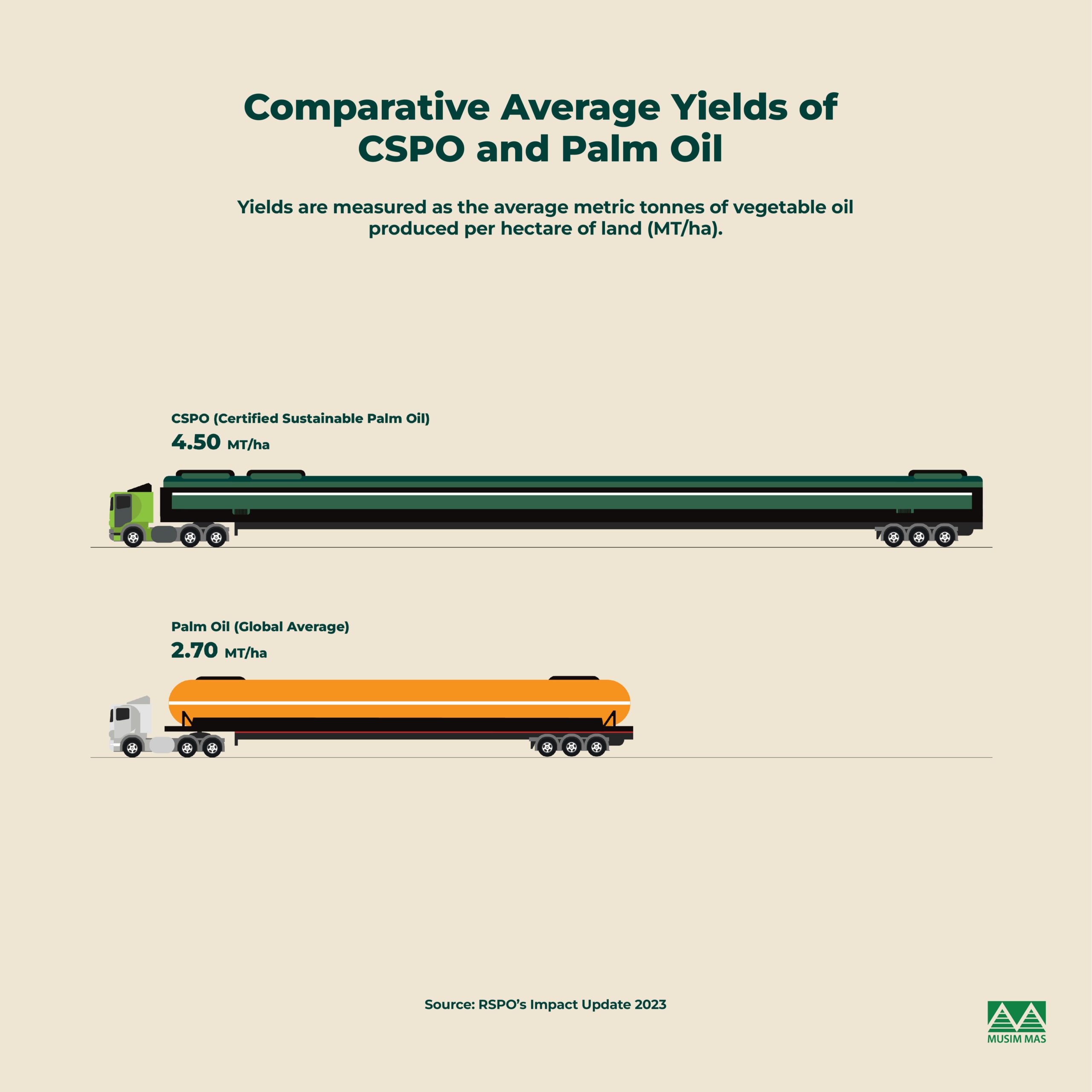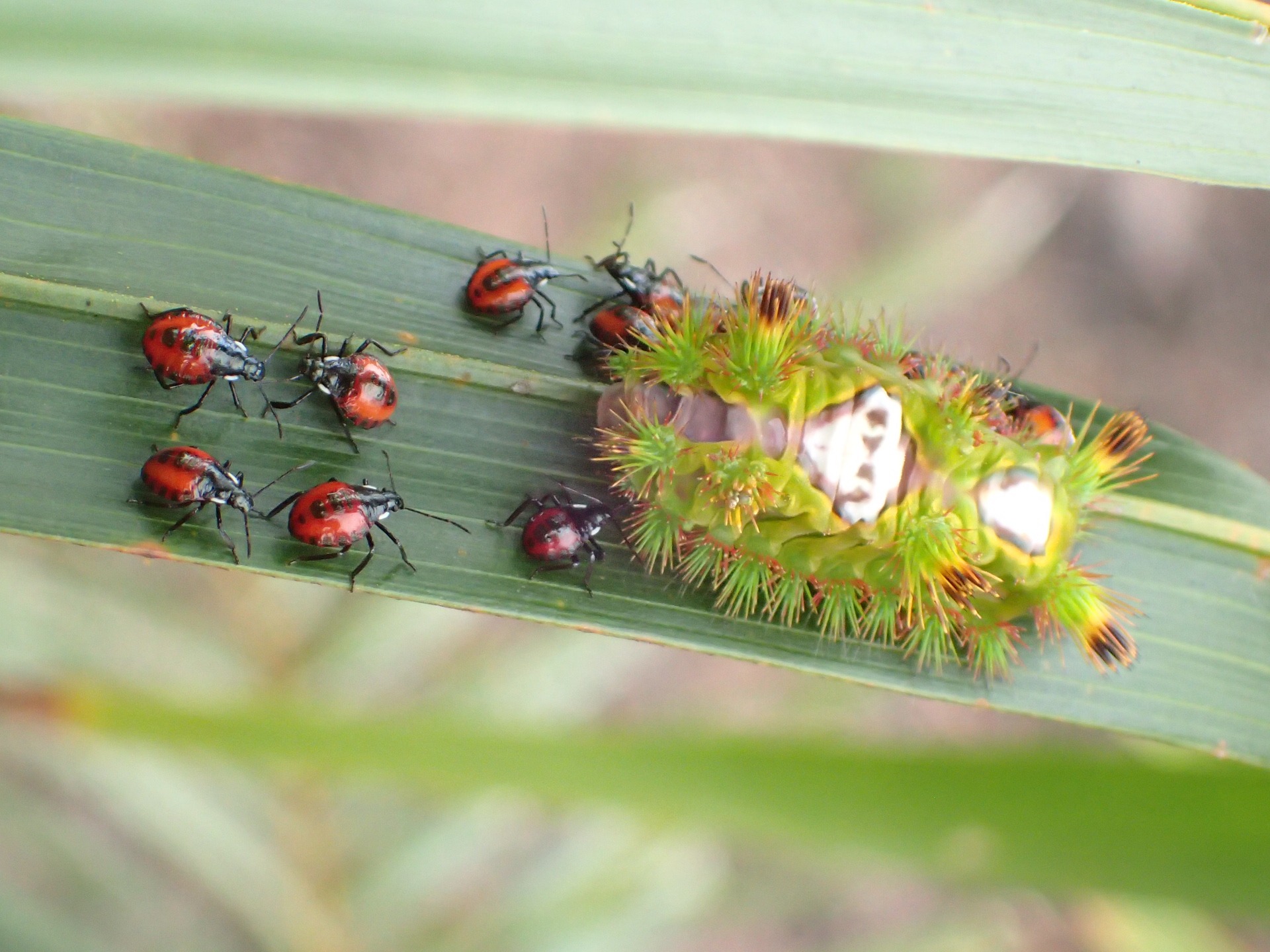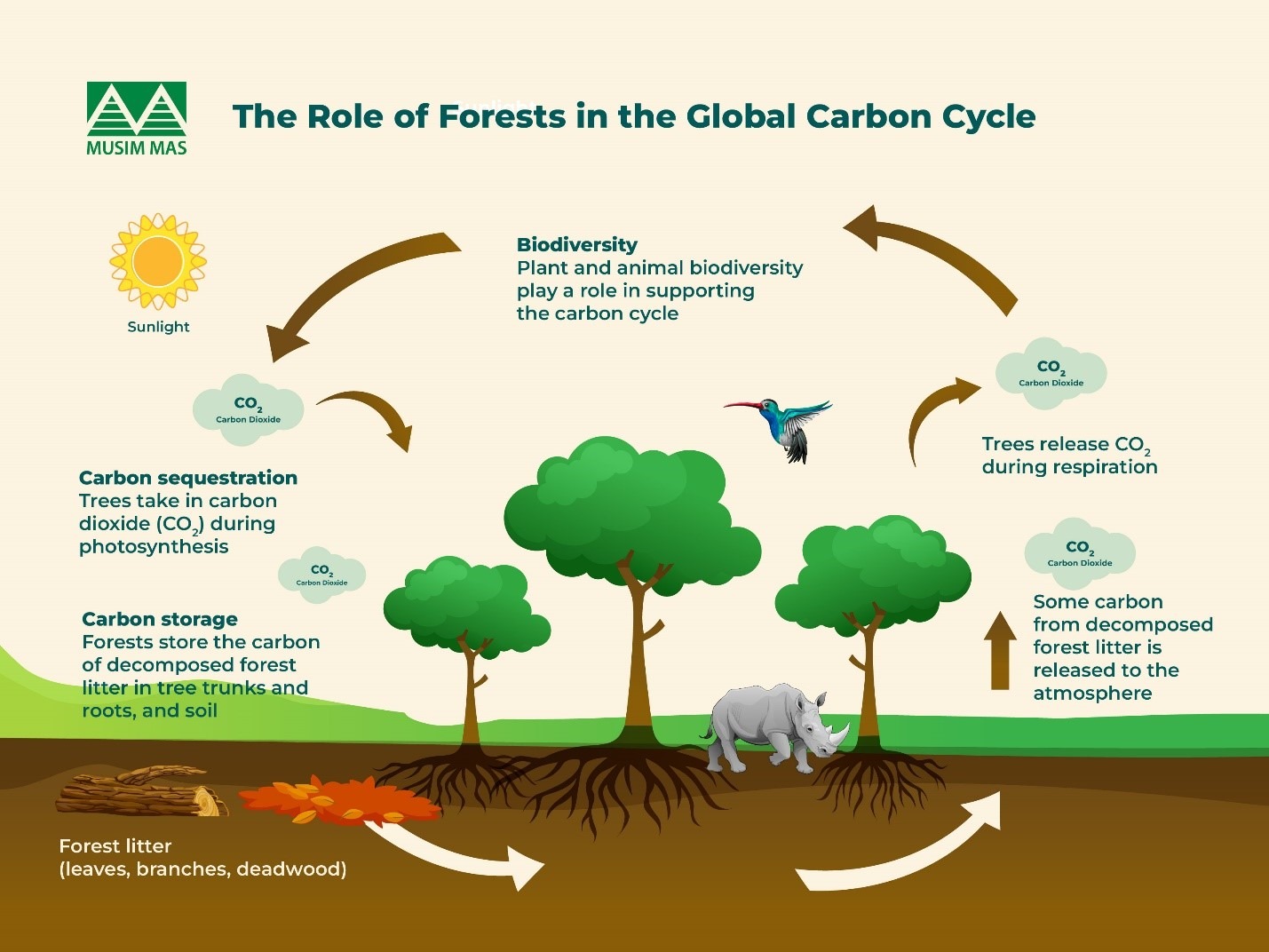Updated on 6 May 2024 by: Yeo Yu Teng
Sustainable palm oil definition | How can palm oil be sustainable | How to find sustainable palm oil | Smallholders’ challenges | Future of palm oil
Have you ever indulged in a creamy scoop of ice cream or washed your hair with your favorite shampoo? Chances are, you’ve encountered palm oil, a popular ingredient in numerous everyday products.
But here’s the catch: alongside its widespread use comes a dilemma – the association of palm oil with deforestation and environmental concerns. Let’s explore the stigma surrounding palm oil and examine how producers, governments, and environmental organizations are making strides towards a sustainable palm oil industry.
What is Sustainable Palm Oil?
Before we dive into sustainability, let’s grasp how palm oil is made and its origins. Palm oil is a widely used edible vegetable oil that comes from the fruits of oil palm plants, which grow in tropical climates. These plants thrive in tropical climates, with Indonesia and Malaysia accounting for 90% of the global production. Once harvested, these fruits undergo processing into various palm oil products that are transported globally to meet the growing demand for oils and fats.
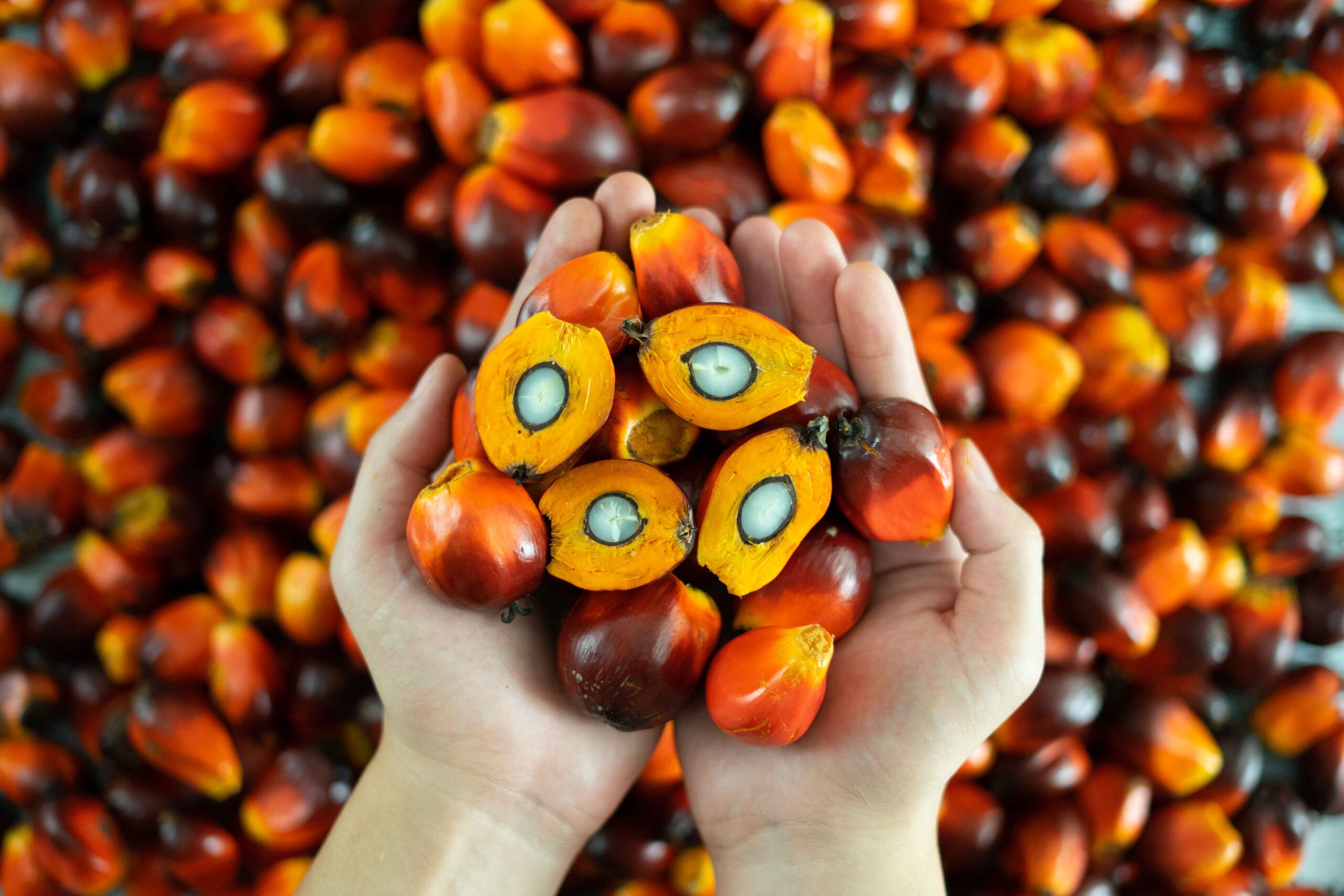
Now, onto the burning question: what exactly is sustainable palm oil? It refers to palm oil that’s cultivated, processed, distributed, and sold responsibly. This involves adhering to stringent regulations that safeguard animals, the environment, and the people involved. Sustainably produced palm oil includes no deforestation, treating communities and workers fairly, and protecting wildlife and natural habitats.
The Challenge with Palm Oil
Despite its extensive use, palm oil carries a weighty baggage of environmental and social challenges. The World Resource Institute (WRI) reveals that palm oil ranks as the second leading cause of deforestation from 2001 to 2015, replacing 10.5 million hectares of trees with palm plantations [1].
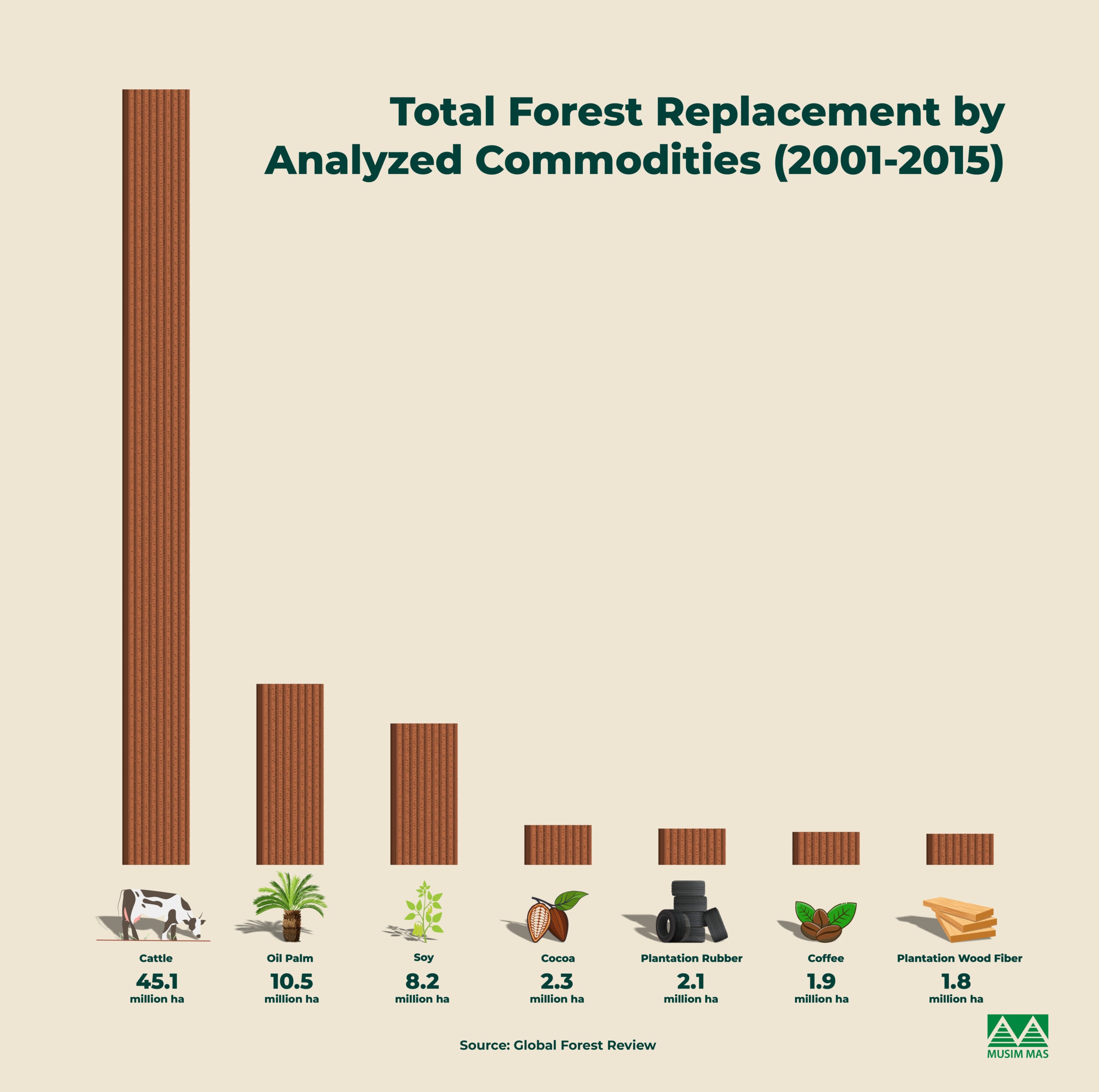
Deforestation threatens biodiversity, as forests serve as homes for various animals, including Sumatran tigers, elephants, and orangutans in Indonesian rainforests. The loss of these habitats due to deforestation is a shared concern across different agricultural sectors, extending beyond palm oil to include soybean production.
Moreover, deforestation contributes to forest fires and transboundary haze, with many small-scale farmers resorting to cheaper slash-and-burn methods to clear land for crop cultivation. This practice emits toxic ash and smoke, polluting the air and posing health risks to individuals.
The palm oil industry also grapples with social issues, such as conflicts between companies and indigenous communities living on company concessions. These conflicts stem from land rights disputes and often result in displacement and marginalization of indigenous peoples. Also, allegations of worker exploitation and labour abuses on oil palm plantations cast a shadow over the industry’s social sustainability efforts. Unfortunately, these challenges aren’t confined to palm oil but extend to other agricultural sectors globally.
Why Banning Palm Oil Isn’t the Solution
With palm oil under scrutiny, one might wonder: why not ditch palm oil altogether?
Here’s the twist: palm oil’s efficiency sets it apart from other vegetable oils. Oil palms yield 6 to 10 times more oil per hectare of land compared to temperate oilseeds like rapeseed and sunflower [2].
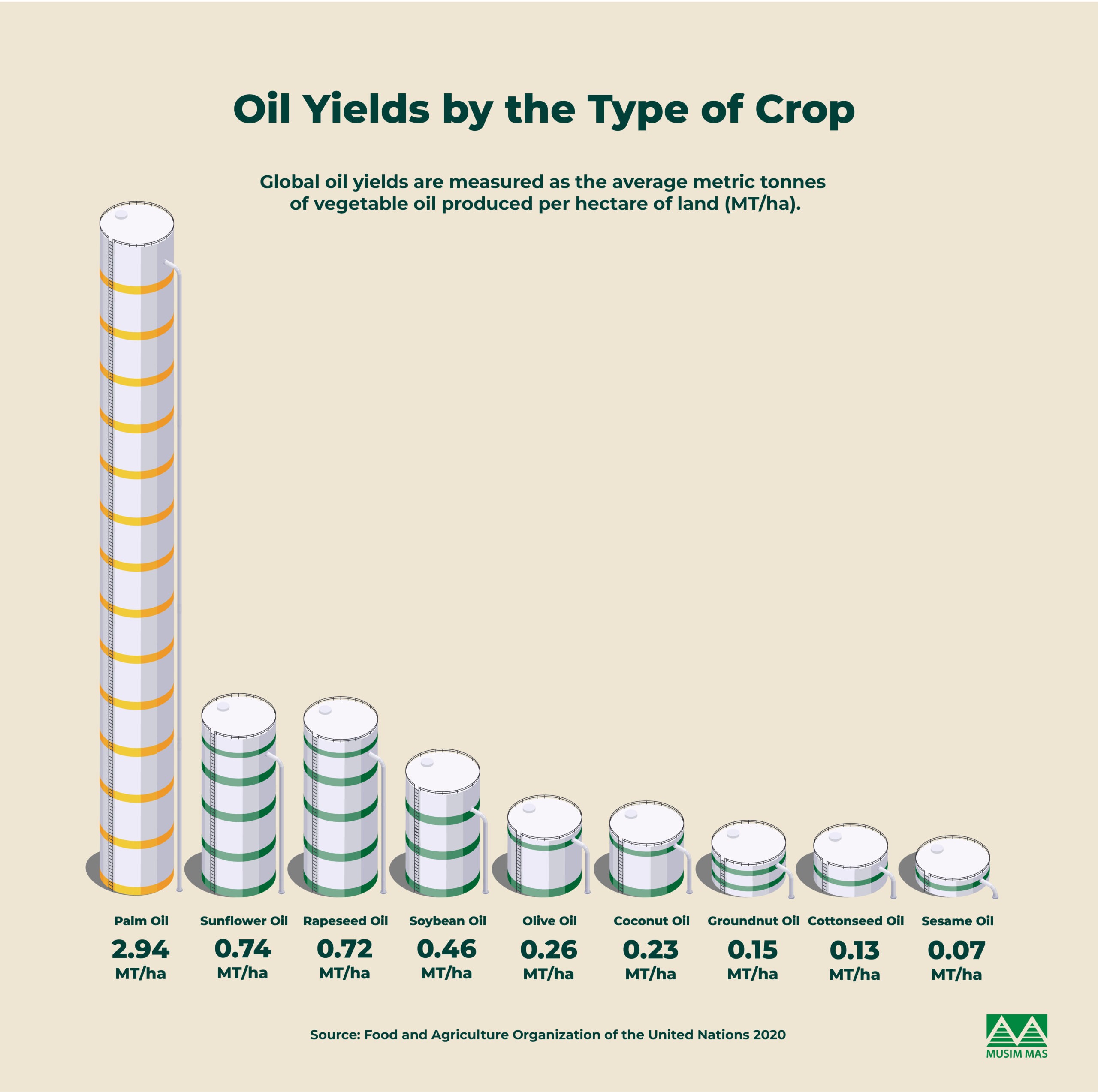
If we were to replace palm oil with other oilseed crops, we would need more land to produce the same amount of vegetable oil. According to a report from the International Union for Conservation of Nature (IUCN), this would have potentially more significant negative impacts on biodiversity [3].
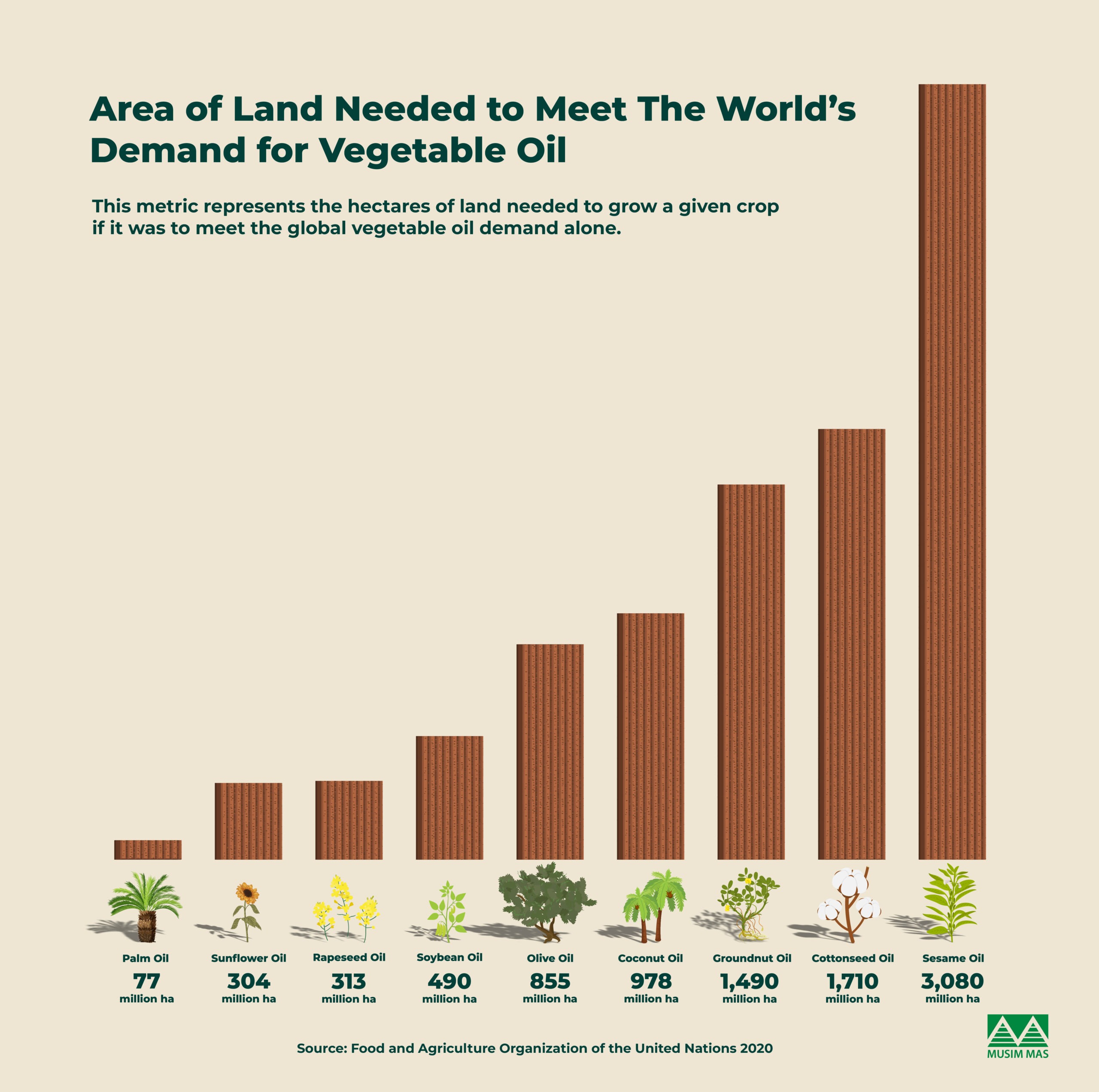
Plus, oil palms have a longer lifespan. They flower and produce fruits across different seasons and remain productive even after 25 years. This enables farmers to harvest and sell the fruits throughout the year and across many years, ensuring a steady income source. Conversely, annual oil crops, like rapeseed, sunflower, or soy, only grow once a year and die after one season. Imagine the substantial costs and labour involved if the farmers had to cut down the crops and plant new ones after every harvest and year.
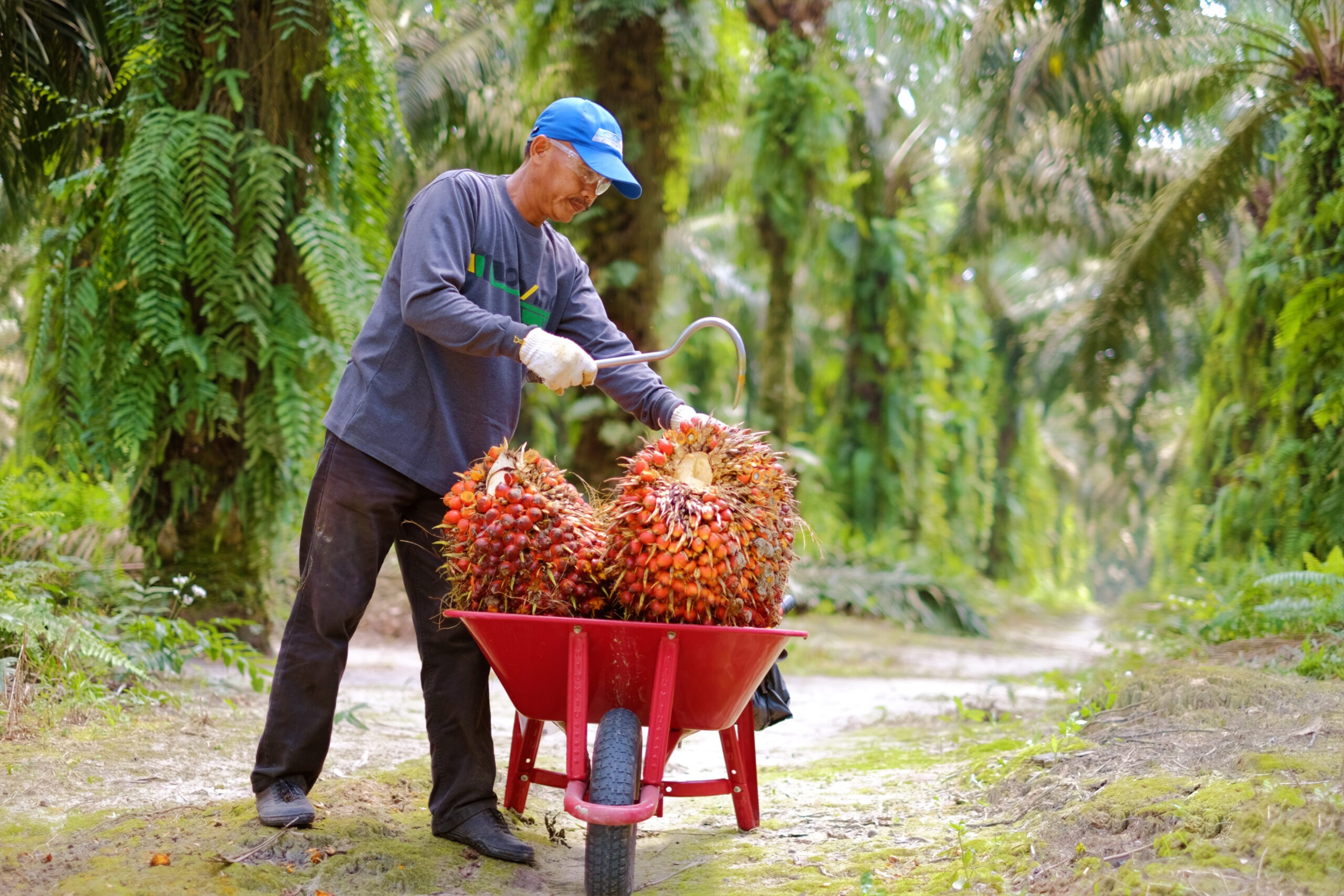
Let’s not forget about the small-scale farmers in Indonesia. With over 2.6 million of them, many struggle with poverty. Palm oil is their lifeline, providing their families with food, shelter, and education. According to the Palm Oil Agribusiness Strategic Policy Institute (PASPI), for every 10% increase in palm oil production, poverty decreases by 7.7% [4]. Palm oil is vital in reducing poverty in rural and urban areas, aligning with the United Nations’ 17 Sustainable Development Goals set in 2015.
How Can Palm Oil Be Sustainable?
So, how do we steer palm oil towards a greener path? Palm oil companies are embracing policies like NDPE, which stands for no deforestation, no peat, and no exploitation. They require farmers to stop burning land, assess land before starting new plantations, and get permission from local communities before using the land.
Certification systems like the Roundtable on Sustainable Palm Oil (RSPO) provide standards for sustainable palm oil production, promoting transparency and accountability within the industry. The RSPO Principles and Criteria (P&C) standards are agreed upon by various stakeholders and updated every five years to ensure their stringent and pertinent nature. Also, sustainable palm oil that are certified by organisations, such as the RSPO, have higher average yields compared to normal palm oil and non-RSPO palm oil.
With the collective effort of companies, government, and non-governmental organizations, we can observe that deforestation due to palm oil has decreased in Indonesia [5].
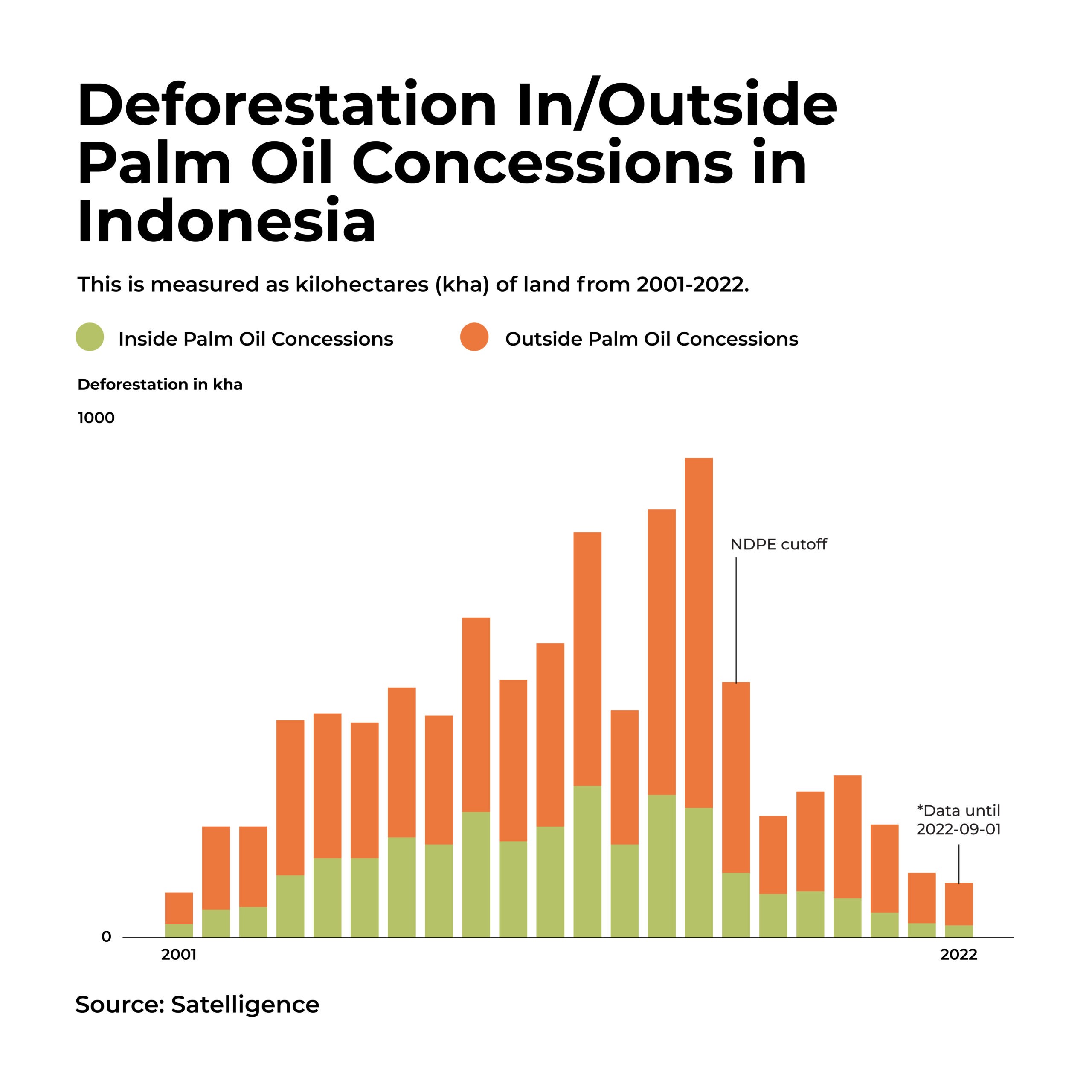
How Musim Mas Ensures Sustainably Produced Palm Oil
Let’s take a closer look at how Musim Mas is paving the way for sustainably produced palm oil:
NDPE Policies
Musim Mas goes above and beyond industry standards with its No Deforestation, No Peat, No Exploitation (NDPE) policy. This policy ensures that palm oil is sustainably grown while protecting the rights of workers, communities, and indigenous peoples. Not only is this policy implemented in Musim Mas’ own plantations, but it’s also extended to third-party suppliers to ensure responsibly sourced palm oil.
RSPO Certification
100% of Musim Mas’ mills with integrated plantations are certified by the Roundtable on Sustainable Palm Oil (RSPO). This certification meets stringent principles and criteria for sustainably produced palm oil, ensuring environmental and social responsibility.
Net Zero
Musim Mas is taking a bold step towards combating climate change by pledging to achieve net-zero emissions by 2050, aligning with climate science as per the Science Based Targets Initiative (SBTi). This commitment resonates with the ambitious targets of the Paris Agreement, aiming to limit global warming to 1.5°C.
Collaborations
Musim Mas pushes for positive change in the industry on multiple levels. Some collaborations and partnerships include the Consortium of Resource Experts (CORE), Decent Rural Living Initiative (DRLI), Earthqualizer, Fire-Free Alliance, Indonesia Sustainable Palm Oil (ISPO) working group, South East Asia Rainforest Research Partnership (SEARRP), and many more.
How to Find Sustainably Produced Palm Oil
As consumers, we wield power to promote sustainability through our choices. But how do we know if the products on supermarket shelves support sustainable palm oil? Just take a peek at the packaging – if you spot the RSPO logo, you’re on the right track. The RSPO trademark label comes in three types: Identity Preserved & Segregated, Mass Balance, and RSPO Credits. If you’re more of a digital detective, hop onto the RSPO’s website or download their mobile app buying guide for global supermarkets.
Another ace up your sleeve is WWF’s Palm Oil Buyers’ Scorecard [6]. This handy scorecard evaluates over 200 retailers, manufacturers, and food service companies, revealing their commitment to Certified Sustainable Palm Oil.
Challenges for Smallholder Farmers in Sustainable Palm Oil Production
Smallholder farmers own small plots of land, usually 20 hectares or less, and account for around 41% of all oil palm plantations in Indonesia. They run their farms independently, without being tied to any specific company.
Hurdles Faced by Smallholders
- Lack of Agricultural Knowledge: Many smallholders lack access to proper agricultural practices needed to boost their agricultural yields.
- Financial Constraints: Limited access to finance makes it difficult for smallholders to purchase fertilizers, replant aging crops, and implement sustainable practices such as no burning.
- Poor Quality Planting Materials: Issues with obtaining high-quality planting materials contribute to lower crop yields and hinder farmers’ ability to maximize their production.
- Limited Market Access: Smallholder farmers often struggle to access profitable markets for their produce, reducing their ability to sell their products at higher prices.
- Financial Literacy and Business Skills: Many smallholders lack financial literacy and business planning skills, which are essential for managing their farms effectively and improving profitability.
These challenges result in lower profitability and sustainability standards for smallholder farmers. Research from the International Finance Corporation (IFC), a member of the World Bank, indicates that independent smallholders’ yield can be significantly lower, up to 116%, compared to company-owned plantations in Indonesia.
Musim Mas’ Smallholders Program
In response to these challenges, Musim Mas has developed the Smallholders Program to support smallholder farmers in improving their livelihoods and sustainability practices. The program, aligned with Musim Mas’ NDPE policy, focuses on providing training in good agricultural practices, financial literacy, and personal nutrition.
Since its inception, Musim Mas’ Smallholders Program has trained over 36,700 smallholders in Indonesia as of December 2023, empowering them to become better farmers and improve their livelihoods. Through initiatives like this, Musim Mas is working to address the challenges smallholder farmers face and promote sustainable palm oil production in Indonesia.
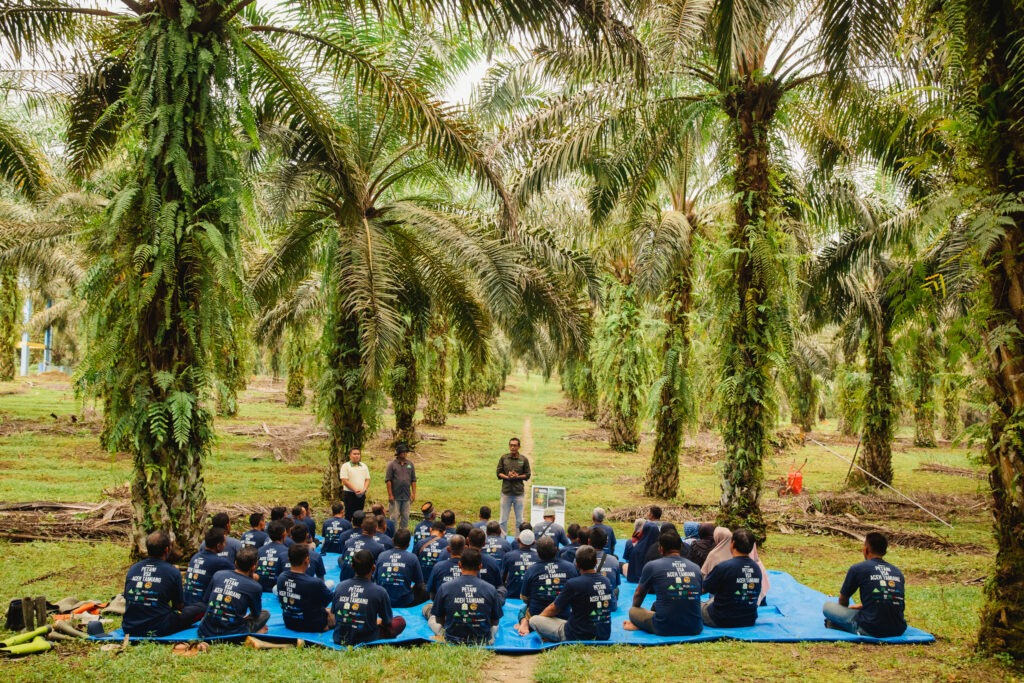 |
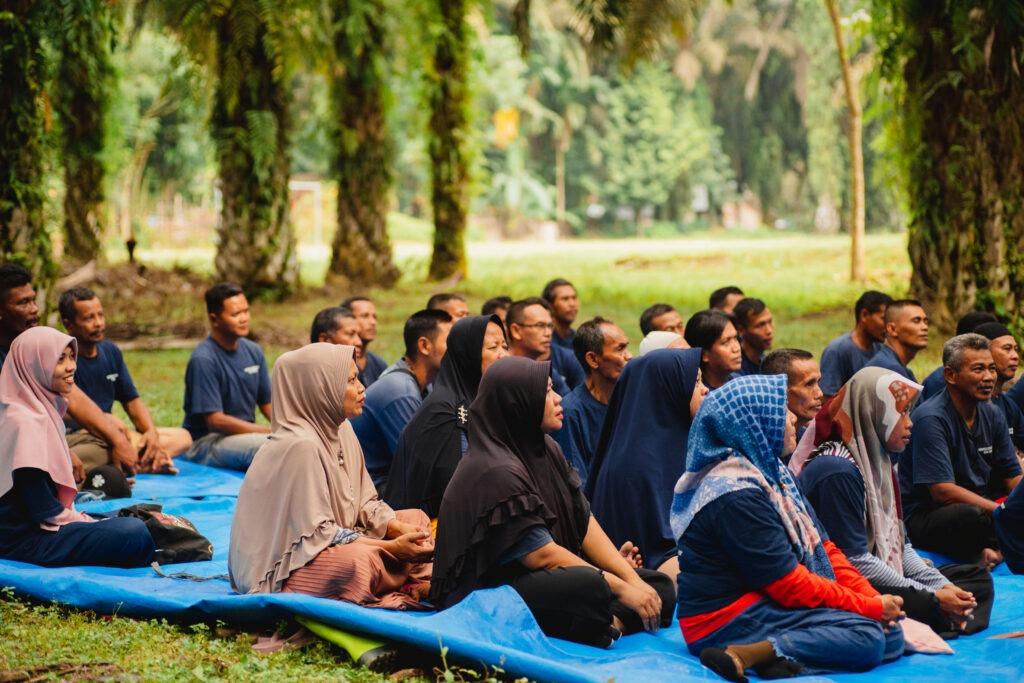 |
The Future of Sustainable Palm Oil Production
A challenge looms ahead as we gaze into the future. The global population is expected to hit 10 billion by 2050, and we need to produce 56% more food while using less land to feed this population [7]. That’s where palm oil comes in to meet this rising demand. When produced sustainably, palm oil isn’t just about food – it also plays a role in preserving ecosystems.
Yet, there’s a hitch. Low demand for sustainable palm oil makes it less enticing for farmers to produce, creating a stalemate situation. Without demand, producers have little incentive to obtain certification like RSPO, which sets standards for sustainable palm oil. On the flip side, prioritizing food security over sustainability drives up demand for conventional palm oil, discouraging sustainable production due to higher costs and market challenges.
So, what’s the solution? It’s not just up to companies, governments, or civil society groups. It’s about shared responsibility, with consumers playing a crucial role in driving change. By supporting sustainable palm oil, we can collectively steer the industry towards a greener future, ensuring that no one gets left behind in this vital shift.
References:
[1] https://research.wri.org/gfr/forest-extent-indicators/deforestation-agriculture
[2] https://portals.iucn.org/library/node/47753
[3] https://www.academia.edu/6827263/The_future_of_oil_palm_as_a_major_global_crop_opportunities_and_challenges
[4] https://gapki.id/en/news/2022/01/12/palm-oil-plays-significant-role-in-reducing-global-poverty/
[5] https://satelligence.com/signatories-of-the-agriculture-sector-roadmap-to-15c-have-a-secret-weapon-to-defeat-deforestation/
[6] https://palmoilscorecard.panda.org/#/home
[7] https://www.wri.org/insights/how-sustainably-feed-10-billion-people-2050-21-charts



